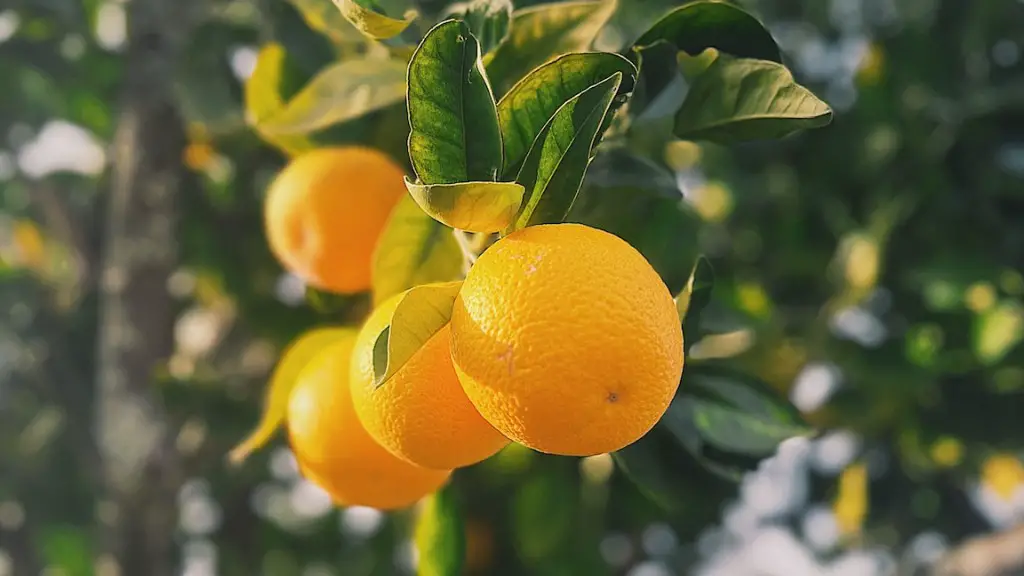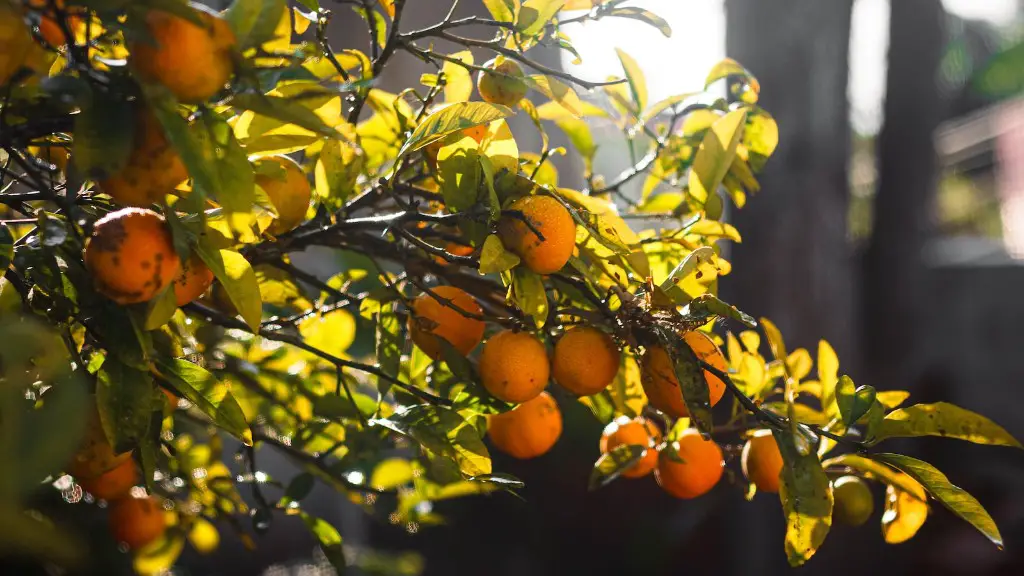Lemon trees require quite a bit of light and full sun exposure in order to thrive. Most sources recommend at least 8-10 hours of direct sun exposure each day. To determine what kind of light your tree needs, you’ll need to pay attention to its environment. If you’re growing a lemon tree in a container, it should have at least 6 hours of direct sunlight each day. For trees that are grown in the ground, the recommended amount of light is 8-10 hours. Lemon trees grown in a greenhouse or conservatory should receive 12-14 hours of light daily. However, if the trees are grown outside, they should receive 12-14 hours of bright, full sun exposure.
Inadequate lighting may cause lemon trees to become stressed, which as a result will cause them to become less productive and produce fewer and smaller leaves and fruits. You also need to ensure that the light is properly distributed since too much direct sunlight can also cause stress. To help protect your tree from the sun, you can provide shade with a shade cloth or even an umbrella.
Lemon trees also require some extra light during their flowering period. When the tree is blooming, you should increase the light levels to promote flower and fruit production. When the weather starts to cool, the additional light is important for keeping the tree healthy and preventing it from becoming stressed.
Not providing your lemon tree with enough light can prevent it from fruiting. This can be a problem if you are growing the tree indoors in a bright area but the tree is not getting enough direct sun exposure. If this is the case, you may want to consider providing supplemental lighting. There are many options available that can help provide your tree with the light it needs.
To make sure your lemon tree receives enough light, take some time to observe its environment and ensure it is receiving the correct amount of direct sun exposure. Shade or artificial lighting may also be necessary to keep your tree healthy and thriving.
Direct Sunlight
The amount of direct sunlight a lemon tree needs ultimately depends on its environment. If your tree is planted in the ground or grown in a greenhouse, 8-10 hours of direct sunlight is highly recommended. A lemon tree grown in a hot, sunny climate may even require more sun exposure. Trees planted in containers should receive at least 6 hours of direct sunlight each day. However, if your lemon tree is grown in an outdoor environment, it should receive 12-14 hours of direct, full sun exposure.
Direct sunlight is essential for lemon tree growth. Without enough sun, the tree will become stressed, production will decrease, and the tree may even become unproductive. On the other hand, too much direct sun can have an adverse effect as well. Lemon trees may benefit from some shade, especially during their flowering period, when the additional sunlight is important for promoting fruit and flower production.
The key to providing your lemon tree with enough direct sunlight is to observe its environment. If the tree is planted outside, make sure there are no tall buildings or trees blocking its sun exposure. Consider using some kind of shade cloth to provide extra protection from the sun. For trees grown in containers or greenhouses, natural sunlight may not be enough, and supplemental lighting may be necessary.
Supplemental Light
For trees grown indoors, artificial light may be needed to supplement the natural sunlight. Supplemental lighting provides the tree with the light it needs to stay healthy and productive. This can also be helpful if you live in an area with limited sunshine or a climate that receives too much sun.
There are many supplemental lighting products available for lemon trees. You can use grow lights, full-spectrum bulbs, or even fluorescent lights. Whichever type of light you choose, make sure it is positioned close enough for the tree to receive the most benefit.
It’s important to remember that natural sunlight is still best for lemon trees. If possible, try to place the tree close to a window or doorway where it will receive adequate natural light. This can help reduce the amount of supplemental lighting you will need to provide.
When providing supplemental light to your lemon tree, make sure the light is not too close to the tree. If the light is too close, the leaves may become burned and yellow. Be sure to adjust the height and intensity of the light based on the needs of your tree.
Lemon Tree Care
In addition to providing the right amount of light, there are other things you can do to ensure your lemon tree is healthy and productive. Regular watering is essential, as soil that is too dry can cause the tree to become stressed. You should also fertilize the lemon tree once a month to ensure it is getting the nutrients it needs.
As with any other tree, make sure you are pruning your lemon tree regularly. This can help encourage the growth of flowers and fruits, as well as keep the tree from becoming too large and unruly. You should also keep an eye out for pests or diseases that could damage the tree.
Finally, it is important to keep an eye on your lemon tree’s environment. If you notice it is not getting enough light, you may need to provide it with some supplemental lighting. If it is receiving too much sun exposure, you can try providing some shade.
Light Requirements
The amount of light a lemon tree needs is largely dependent on its environment. Trees that are planted in the ground or grown in a greenhouse should get at least 8-10 hours of direct sunlight each day. Trees grown in containers should get at least 6 hours per day, while trees grown outdoors should get 12-14 hours of full sun exposure. Additional light is also required during the flowering period in order to ensure fruit and flower production.
Not providing your lemon tree with enough light can negatively affect its productivity. Also, too much direct sunlight can cause the tree to become stressed, so some kind of shade should be provided when necessary. If your tree is not getting enough sunlight, you may need to provide it with some supplemental lighting to keep it healthy.
Overall, it is important to observe your lemon tree’s environment and make sure it is receiving the correct amount of light. By providing the tree with the correct amount of sunlight, you can ensure it stays healthy and productive.
Sun Protection
Providing the right amount of sunlight is important for keeping your lemon tree healthy and productive. However, too much direct sun exposure can cause the tree to become stressed. To help protect it from the sun and ensure it receives the appropriate amount of sunlight, you can provide some kind of shade. This can be done with a shade cloth or even an umbrella.
Introducing some kind of shade to your lemon tree’s environment can help regulate the amount of sunlight it receives. This is especially important during the flowering period, when additional light is important for promoting fruit and flower production. By providing the tree with the shade it needs, you can ensure it stays healthy and productive.
In addition to providing your lemon tree with shade, it is also important to monitor its environment for any signs of pests or diseases. Treating any issues promptly can help ensure your tree stays healthy and productive.
Conclusion
Lemon trees require quite a bit of light and full sun exposure in order to thrive. To determine what kind of light your tree needs, you’ll need to pay attention to its environment. Most sources recommend 8-10 hours of direct sun exposure each day, while trees planted in containers should receive at least 6 hours. Shade or artificial lighting may also be necessary to keep your tree healthy and thriving.
It is important to remember that not providing your lemon tree with enough light can prevent it from fruiting, and too much sun can cause the tree to become stressed. To help protect your tree from the sun, you can provide shade with a shade cloth or even an umbrella. Additionally, supplemental lighting may be necessary to keep your lemon tree healthy and productive.




